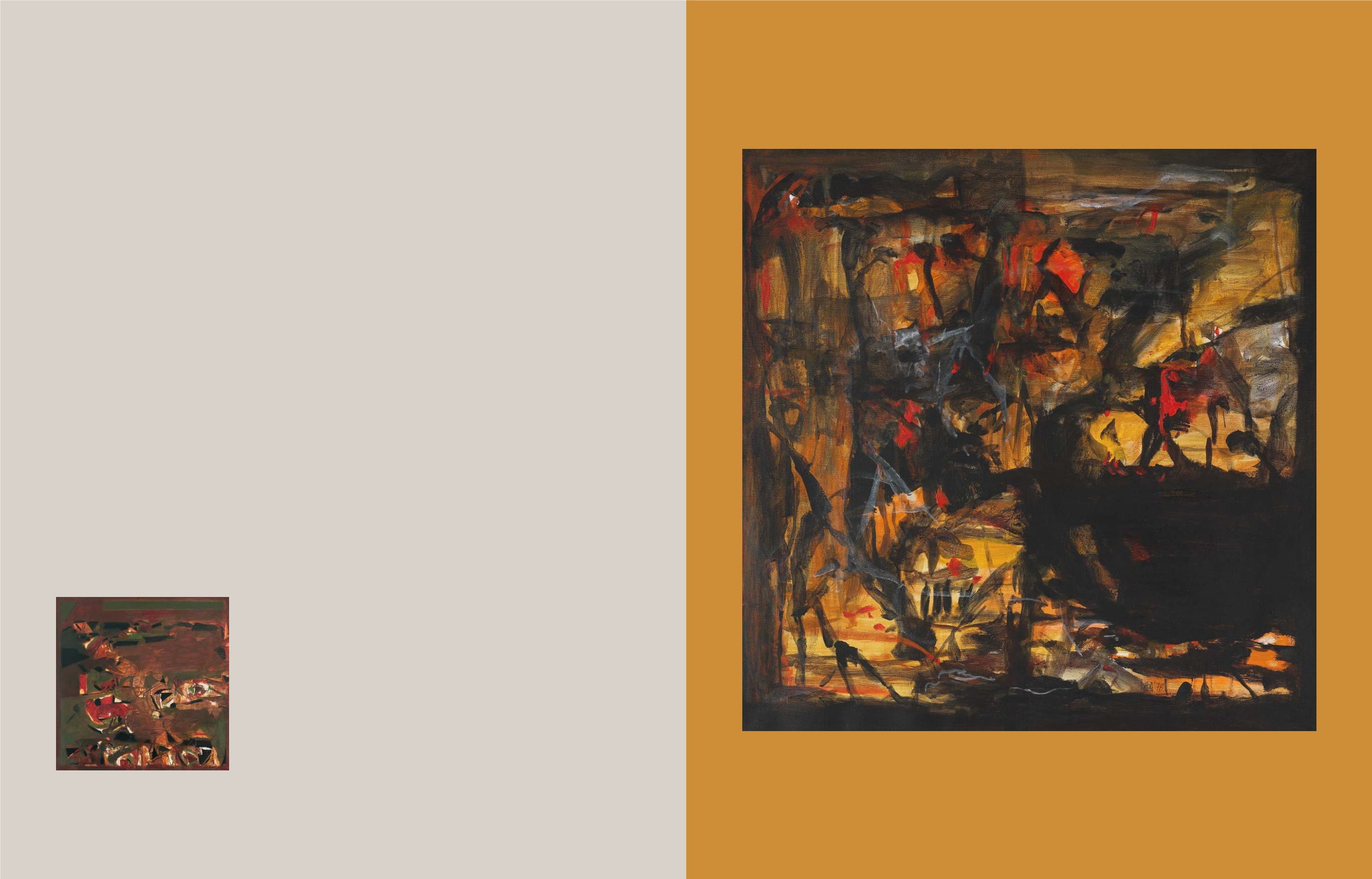

112
113
S H Raza evokes the emotive qualities of the landscape
of northern India in this painting from 1978. The gestural
brushwork carries forward Raza’s unrestrained, expressionist
technique of the preceding decade. The composition and
earthy colours bear a raw energy which explores the emotive
content of colour. Paintings such as this indicate his shift
towards the intangible, metaphysical concepts of philosophy
that were to be his focus in later years.
Through the 1970s, Raza was intent on returning to his roots.
After studying colour, structure and composition in France in
the 1950s, and then creating spontaneous, non‒representational
landscapes in the 1960s, Raza felt his art to be incomplete
without reference to his country. In his own words, “It was not
easy to acquire some measure of success and have a standing
in France and Europe. My ambition was greater and I thought
that I had to go back to my sources... to study more seriously
the fundamental principles that underlie the Indian arts.” (S H
Raza, Ashok Vajpeyi,
Passion: Life and Art of Raza
,
New Delhi:
Rajkamal Books, 2005, p. 60) He made frequent trips through
India from 1975, and revisited Babaria and Kakaiya in Madhya
Pradesh, where he had spent his childhood.
On these visits to India, Raza delved into Indian poetry, music,
dance, literature, philosophy and painting. He studied human
expression and mood in miniature paintings. “We know very
well that in a painting this investing of climate, a mood is an
Indian concept. I constantly gave importance to this desire to
paint a mood of the morning or the day, or of an evening like
in the
ragas
and
raginis,
even if the whole perception was in
colour, and in the actual work.” (Raza and Vajpeyi, p. 60) He
painted fluid landscapes in the 1970s, free from the restrictions
of his previous classical, Western training. The present lot
captures the intangible qualities of emotion and mood which
Raza associated with Indian life and art.
PROPERTY OF A LADY, MUMBAI
53
S H RAZA
(1922 ‒ 2016)
Untitled
Signed and dated 'RAZA '78' (lower
right); signed and dated again 'RAZA
1978' (on the reverse)
1978
Acrylic on canvas
23.5 x 23.5 in (60 x 60 cm)
Rs 40,00,000 ‒ 60,00,000
$ 63,495 ‒ 95,240
EXHIBITED
Split Visions: Abstraction in Modern Painting
,
New York: Aicon Gallery, 18 August ‒ 17
September 2016
Oasis
, 1975
Saffronart, Mumbai, 12 February 2015, lot 35
Sold for INR 1.86 crores ($304,918)


















